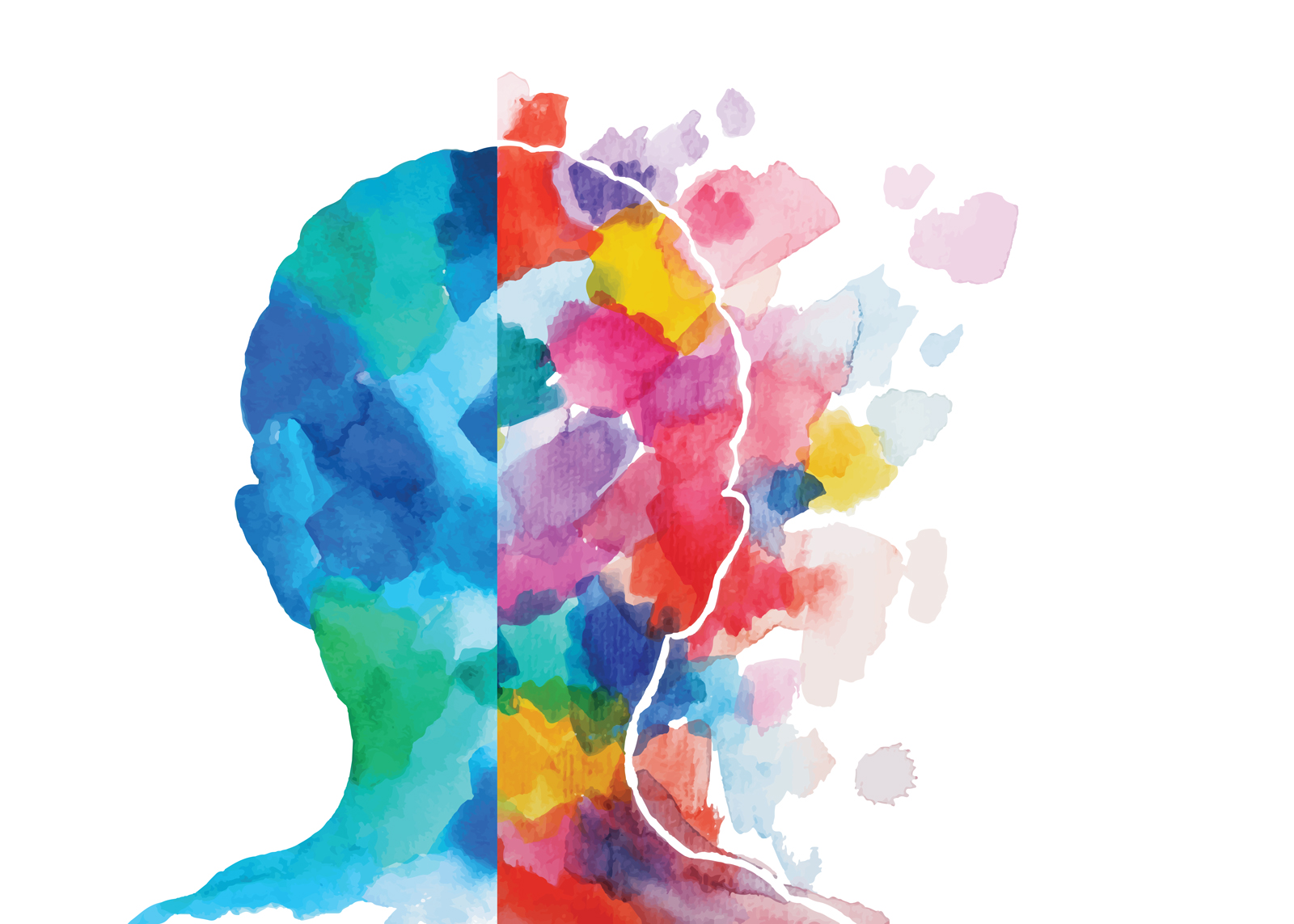We have learned more about the brain in the last 10 years than in any previous century.[1] And although body and mind were previously thought to be separate and distinct, science and medicine have proven their close interrelatedness, or inseparability. How we think largely affects how we feel, both physically and emotionally.
For instance, many studies show that stress can cause stomachaches and impact our gut health.[2] Some research also links listening to music to lowering blood pressure and positively affecting other cardiovascular functions.[3]
Buddhism also teaches the interrelatedness of our bodies and minds, and how to fundamentally transform our lives based on the principle of the “oneness of body and mind,” or shikishin-funi in Japanese.
Shiki literally means “color,” “hue” or “appearance” and refers to physical existence. Shin means “mind” or “heart” and refers to spiritual or intangible attributes. And funi is a truncation of the phrase nini funi, which means “two but not two,” connoting the inseparability of the physical and spiritual aspects of life.
While body and mind can seem to be two distinct and separate things, from the Buddhist perspective of oneness,[4] they are not. They are integral components of life as a whole that arise from the same essential source: the Mystic Law, or Nam-myoho-renge-kyo.
When we chant Nam-myoho-renge-kyo, we awaken the Buddha nature that exists within us and in everything around us. So, rather than thinking of the mind as only comprising desires, feelings or conscience, and the body as a biomechanical form, we come to understand the interconnectedness of all life and phenomena, which have both material and spiritual aspects.
This is reflected in the word Nam of Nam-myoho-renge-kyo, which indicates dedicating our life to the Mystic Law. Nichiren Daishonin explains:
“Dedication” refers to the element of physical form as it pertains to us, while “life” refers to the element of mind as it pertains to us. But the ultimate teaching tells us that form and mind are not two.[5]
So, by chanting and practicing Buddhism for self and others, we activate our Buddha nature and elevate our life condition, bringing forth our inherent ability to harmonize the workings of our mind and body at the most essential level.
The Key to a Healthy Body and Mind
Based on the oneness of body and mind, what’s most important in forging a strong, healthy and happy life is our resolve. Ikeda Sensei explains:
Life is inherently endowed with the marvelous capacity to convert even the negative into something positive. At the most basic level, one’s life is created by one’s own inner resolve, one’s mind. This is even more true of a person with faith.[6]
Here, by “one’s mind,” Sensei means more than simply thoughts or ideas; he is stressing the importance having a powerful resolve that permeates one’s heart, mind and body.
When we experience illness or anxiety, which can easily take a mental or physical toll, it’s helpful to know that we can chant and engage in our Buddhist practice to alleviate stress, develop resiliency and strengthen our inner resolve.
In chanting, we tap the power of the Mystic Law within us and transform negative tendencies such as doubt, fear, anxiety or anger into positive qualities like confidence, courage, wisdom and appreciation. These help us take positive actions that propel us forward.
Founding Soka Gakkai President Tsunesaburo Makiguchi stated that by persevering in faith with a powerful determination to change “poison into medicine,” we can gain great fortune and benefit, and become even healthier than before.[7] Here, “becoming healthier” can mean improving our physical and mental health, and indicates our ability to create great value in any situation.
Sensei offers the following points for attaining a state of excellent health: “Chant Nam-myoho-renge-kyo, trusting in the power of the Gohonzon. Strive fearlessly and patiently. Refuse to accept defeat. Never retreat a single step. In the end, you are certain to triumph!”[8]
What Does the Oneness of Body and Mind Look Like?
Anne O’Sullivan, an SGI member in Ireland, suffered from ulcerative colitis, an inflammatory bowel disease that caused crippling stomach pains and rapid weight loss, leading to surgeries and repeated hospital stays. She was later diagnosed with Crohn’s disease, a chronic illness affecting her digestive tract.
Chanting, engaging in Buddhist activities and studying Nichiren Daishonin’s writings and Sensei’s guidance, what she describes as her “constant companions,” helped her rise above her frustration and hopelessness, and deepen her appreciation for life.
While she continues to deal with Crohn’s disease, she says: “From a certain perspective, I was ‘unwell’ before I became sick. My attitude toward myself was unhealthy, as I constantly looked outside myself for happiness, which always led to more feelings of dissatisfaction. It took my illness to make me realize that the source of true happiness is within myself. I now have complete conviction in the power of my prayers.”[9]
Like Ms. O’Sullivan, countless SGI members are using their Buddhist practice to elevate their life condition and revolutionize their lives physically and spiritually, encouraging many others along the way.
—Prepared by the SGI-USA Study Department
References
- “Brain Basics: Know Your Brain,” https://www.ninds.nih.gov/Disorders/Patient-Caregiver-Education/Know-Your-Brain <accessed on Nov. 3, 2021>. ↩︎
- “The gut-brain connection,” https://www.health.harvard.edu/diseases-and-conditions/the-gut-brain-connection <accessed on Nov. 3, 2021>. ↩︎
- “Tuning in: How music may affect your heart,” https://www.health.harvard.edu/heart-health/tuning-in-how-music-may-affect-your-heart <accessed on Nov. 3, 2021>. ↩︎
- For more on “Oneness,” see concept #16 in this series, published in the Nov. 5, 2021, World Tribune, p. 9. ↩︎
- The Record of the Orally Transmitted Teachings, p. 3. ↩︎
- Humanism and the Art of Medicine, p. 56. ↩︎
- The Five Eternal Guidelines of the Soka Gakkai, pp. 55–56. ↩︎
- The Wisdom for Creating Happiness and Peace, part 2, p. 106. ↩︎
- Anne O’Sullivan, “My Tailor-Made Disease,” https://www.sokaglobal.org/practicing-buddhism/personal-experiences/my-tailor-made-disease.html <accessed on Nov. 3, 2021>. ↩︎
You are reading {{ meterCount }} of {{ meterMax }} free premium articles

